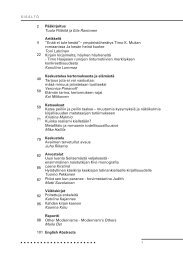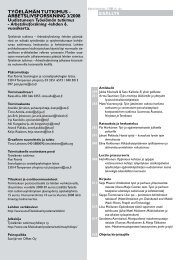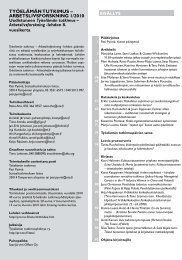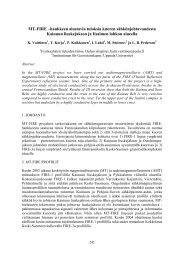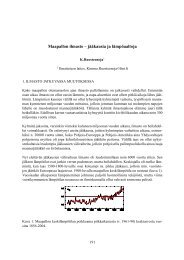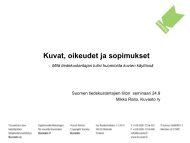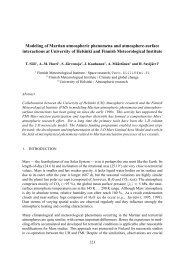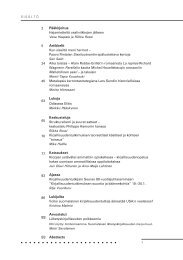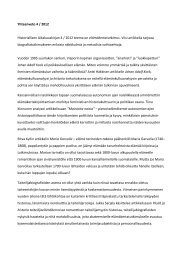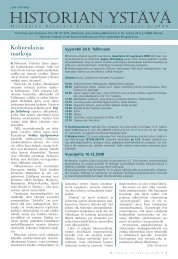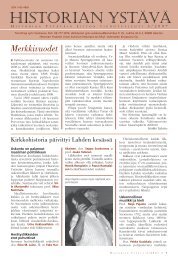Avain 4/2008
Avain 4/2008
Avain 4/2008
You also want an ePaper? Increase the reach of your titles
YUMPU automatically turns print PDFs into web optimized ePapers that Google loves.
esseetpoint of view of translation, this has meant that I had a long association with Finnishwithout understanding more than a word or two, and hence was able to spend manyyears listening to the exquisite music of the language without being bothered about themeaning (something, alas, I can no longer do). As a child, I noticed that Finnish plosiveswere more voiced than in English (the Finnish p sounds like b in my ears), thatsaying hyvää yötä reduced my sister and me to fits of laughter as we struggled to curveour lips around those vowels and diphthongs, and that the women in our extendedfamily had an attractive habit of inhaling when they said joo..., a mannerism I imitat edfor awhile in English until I noticed that people reacted quite negatively to it.These kinds of observations have for better or worse shaped the kind of translatorI have become. The fact that there are subtle differences between English and Finnisheven at the level of phoneme and morpheme affects the most basic things, like what isgoing on in the lips, tongue, teeth and breath of a Finnish-speaking or English-speakingactor. I thus pay very close attention to the poetical qualities of language, to soundsand rhythms, to theatrical “beats.” The fact that my sister and I tended to laugh at thestrangeness of the sounds we were trying to produce has also made me perhaps excessivelywary of creating unintentional or inappropriate comedy through the sounds Idecide to include in a translation, whether in the form of character names, place names,or the odd foreign phrase. These sounds extend beyond mere words or phrases, to thewhole system of filler sounds, backchat noises and the rest. The fact that Americansstarted laughing at me when I inhaled rather than exhaled on my filler “yeah” showshow conservative language can be in some areas, even as it is changing quite quickly inothers.So for me, at the very basic level translating style means wrestling with the physicalqualities of language, of turning one verbal music into another, a theme which runsthrough all of the examples below. As Kate Cameron argues, verbal music is especiallyimportant in theatrical translation:Particularly pertinent to translators of theatre, the ear rather than the eye willbe chiefly attentive to the musicality of language, to the oral and the aural. Thetranslator must attune ears and mouths to the qualities and differences in theoriginal language and their own tongue. (2000, 109.)Writing about translating the Spanish playwright Valle-Inclán, David Johnston similarlyfocuses on the musicality of language, saying he needs to find ways to preserve the“tones, counterpoints and dissonances of Valle’s carefully orchestrated verbal music”(2000, 87).So what are the qualities of Finnish verbal music? One of my favorite descriptions ofthe differences between the sounds and structures of English and Finnish comes froma review of Cajander’s Hamlet, published in 1880 by B.F. Godenhjelm. Speaking of the40Kirjallisuudentutkimuksen aikakauslehti AVAIN • <strong>2008</strong> • 4




